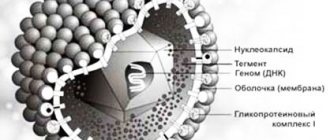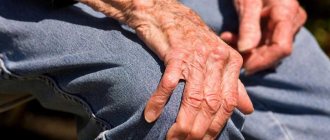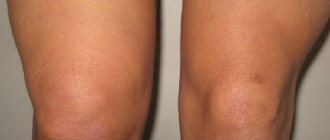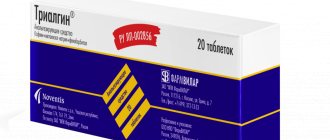Symptoms of altitude sickness
The mild form of the disease usually includes headache, nausea, breathing problems, palpitations, weakness and decreased activity. These symptoms usually disappear after a few days if the person remains at the same altitude. A more serious condition occurs at an altitude of 3000 meters above sea level or more. In addition to the already listed symptoms of the disease, there is a decrease or loss of appetite and insomnia, interrupted sleep due to periodic breathing (when a person breathes normally for some time, and then his breathing stops for 10-15 seconds, as a result of which he wakes up). Severe breathing difficulties, vomiting, frequent coughing, loss of coordination and loss of consciousness are some of the most serious symptoms and require immediate descent or placement of the patient in a portable pressure chamber. In the pressure chamber, conditions corresponding to increased atmospheric pressure are artificially created, and they give the same effect as a decrease in altitude.
What you can do The best way to prevent altitude sickness is to gradually gain altitude, that is, reaching the designated point over several days. If this is not possible, for example, you have a short flight from sea level to an altitude of 3000 meters or more, you can take medications. You should consult a doctor who will prescribe you a drug, which you should start taking 2 or 3 days before your planned trip. At altitude, it is important to try to preserve the maximum amount of fluid in the body, because... Dehydration contributes to the development of mountain sickness. It must be taken into account that when breathing in the cold high above sea level, as well as through evaporation through sweat, a large amount of liquid is lost, especially during such active activities as skiing and trekking. If you are planning on taking part in a trip with a lot of elevation change in a short time, discuss possible concerns with your doctor.
High altitude cerebral edema
Cerebral edema is an excessive accumulation of fluid in the brain tissue, leading to increased intracranial pressure. Brain edema manifests itself as a disturbance in the patient's condition, headache, and disturbances of consciousness (up to coma). In the absence of timely assistance, cerebral edema leads to death.
High-altitude cerebral edema most often develops at night, which is associated with the horizontal position of the human body and increased venous return to the upper half of the body. An additional contribution is made by the fact that at night a person breathes less often and less deeply, which increases hypoxia.
High-altitude cerebral edema is an indication for immediate oxygen therapy and the use of medications if a physician is nearby. At the same time, it is necessary to begin resetting the altitude. Moreover, descent is required in all cases of suspected cerebral edema, as well as if the symptoms of mountain sickness do not stop. Further ascent is impossible.
If you suspect the development of cerebral edema, the victim should under no circumstances remain in a horizontal position for a long time! It is important to remember that even if the symptoms of incipient cerebral edema are recorded at night, descent must begin immediately, since by morning the victim’s condition almost always worsens!
Preventative measures for mountain sickness
Who is at risk? There is no way to predict whether a person will get altitude sickness or not. Surprisingly, age, lack of physical fitness and the presence of various diseases such as asthma do not affect the incidence of altitude sickness. And if you have had this disease before, this does not mean that you will definitely get it again (although you may be considered more susceptible to altitude sickness). Accordingly, there is no guarantee that if you have never had altitude sickness before, you will not develop it in the future.
Signs of high altitude pulmonary edema
The first signs of pulmonary edema are:
- Weakness, headache, rapid breathing.
- Later, pallor, blue lips and nails, restlessness, and wheezing are heard during breathing.
- A pinkish foam may be released from the mouth, which is foamed plasma containing red blood cells.
- If there is no treatment, the terminal phase of pulmonary edema occurs. The pressure drops, breathing becomes shallow and irregular.
The cause of death due to pulmonary edema is asphyxia.
Medical care in the mountains
1. Pre-prepare your body for various types of stress. Create your aerobic and anaerobic training plan. It is possible to use a special mask (Training Mask), which will increase aerobic activity and will be an excellent trainer for the cardiovascular system and lungs.
2. Climb at a moderate pace. A correct climbing program is always built on the principle of gradually gaining height. It is best to stick to an average pace from your possible maximum, since if you constantly work your body at its maximum, there is a chance that you will lose all your strength halfway through the route.
3. "Walk high, sleep low." It is advisable to make so-called acclimatization trips during the day according to the following principle: gain a certain altitude, spend as much time as possible at it to adapt to less oxygen, then descend lower to organize an overnight stay. This ascent pattern has a beneficial effect on acclimatization and allows the body to rest at night and gradually get used to the altitude during the day.
4. As your altitude increases, try to increase the depth of your breathing.
5. Consume adequate food and fluids during the rise. Ideally, during intense exercise in high altitude areas, it is recommended to drink 4 to 5 liters of fluid per day. As for nutrition, it should be regular (even in case of loss of appetite) and include foods high in calories.
6. Avoid using tobacco, alcohol, opiates and other drugs that have tranquilizer effects. Their use leads to narrowing of the airways during sleep, disruption of fluid metabolism, increased stress on the heart and the development of hypoxia.
7. At the first sign of altitude sickness, contact your instructor. Based on your well-being and the route program, a qualified instructor will determine the extent of your mountain sickness and take all necessary actions to eliminate the symptoms. In the case of a mild form of mountain sickness, it is usually enough for participants to take medications such as Ibuprofen and Diacarb * , after which they can continue to climb. In case of moderate and severe forms of mountain sickness, the instructor has the right to decide to stop the ascent for the injured participant and organize a descent to improve his well-being.
* “Diacarb” (acetazolamide) is a diuretic widely used for the prevention and treatment of mountain sickness. The drug acidifies the blood, which causes an increase in breathing, which ultimately can speed up the acclimatization process. Diacarb does not mask the symptoms of mountain sickness and is not the main treatment for the onset of severe hypoxia. Studies have shown that Diacarb 250 mg every 8-12 hours before and during rapid ascent results in fewer symptoms and/or less severe mountain sickness. Side effects of acetazolamide include tingling or numbness in the fingers, toes, and face, changes in taste, excessive urination, and blurred vision (rare). When the drug is discontinued, the side effects disappear. Before taking, be sure to read the instructions.
Proper acclimatization
The main weapon against high altitudes is proper acclimatization . You cannot force events, the body must have time to adapt.
At altitudes above 3500 m, you should not gain altitude too quickly. It is advisable to climb about 500 m per day, get plenty of rest and give the body time to adjust. Every 2 days after the crossing it is better to stop for a day. Enjoy the surrounding views and practice alpine training.
If you are not going on a solo hike, you must take into account the individual characteristics of other participants.
It is advisable not to travel to high altitudes in a short time (helicopter, plane). However, this is not always possible. For example, you have to immediately fly to an altitude of 3000 m while trekking in Peru. If you get to a height in this way, you should spend 1-2 days at it without going higher.
It is very good to adhere to the rule of climbers - “walk high - sleep low” . It is advisable to gain some altitude during the day, spend some time there, while receiving physical activity. For the night, go down a little lower (300 meters). We get a gear pattern of movement in the mountains.
Medicines for mountain sickness
Pharmacological drugs to relieve/relieve symptoms of mountain sickness:
- Diacarb (acetazolamide or Diamox) is a diuretic drug that prevents swelling. It has many side effects and cannot be used as a prophylactic. Acetazolamide can cause seizures because it leaches potassium from the body. Should be taken together with drugs containing potassium and magnesium, for example: panangin or asparkam.
- Dexamethasone – relieves symptoms of mountain sickness, but does not contribute to acclimatization. It has many side effects and is recommended for use only by those who cannot tolerate acetazolamide. You can take it a few hours before climbing.
- Any vasodilator drug (to reduce blood pressure) with the least side effects (but not a dietary supplement).
For prevention, ginkgo biloba extract (vasodilator), antioxidants (tocopherol, ascorbic and lipoic acid), riboxin for cardiac support, coca leaves (available in the Andes) or preparations containing the extract are often used.
Remember that at high altitudes you should always listen to yourself and if you feel very unwell, immediately go down.
What are the main causes of altitude sickness?
As you move away from the earth's surface, the density of the air decreases. This is due to the fact that the pressure in the upper atmosphere is lower than that of the ground. The rarefied zone contains much fewer molecules of gases that make up the air, including oxygen molecules. Therefore, in the highlands, any person who inhales the usual volume of air receives an insufficient amount of oxygen. For example, while trekking in Nepal at 5,500 meters, a person inhales only half the amount of oxygen that he is accustomed to at sea level. Hypoxia (oxygen starvation), along with heavy physical activity, extreme climatic conditions and high levels of radiation, often leads to the development of a pathological process called “mountain sickness.”
The mechanism of development of this disease is as follows. Lack of oxygen in the human body leads to a decrease in oxygen tension in arterial blood plasma and insufficient saturation of hemoglobin with oxygen. In response to suffocation, a person begins to breathe rapidly. But with increased breathing, hyperventilation of the lungs occurs, which is accompanied by a powerful removal of carbon dioxide from the body. Hypocapnia - a lack of carbon dioxide in the blood, in turn, leads to a deterioration in blood supply to the brain and heart, the accumulation of alkaline substances, electrolyte imbalance and redistribution of water between the blood and tissues. These changes are the main cause of altitude sickness.
To maintain vital functions, the human body includes adaptation mechanisms:
- increases the frequency and depth of breathing to speed up gas exchange in the lungs;
- increases pressure and redistributes blood flow, directing it primarily to the blood supply to the heart and brain;
- increases the oxygen capacity of the blood due to the increased release of the main oxygen carriers - red blood cells from the spleen and bone marrow;
- Glycolysis (anaerobic pathway for energy production) is stimulated.
The greater the height of the rise, the more decisive measures the body takes to combat hypoxia, the more time it requires for this. However, the compensatory functions of the body are not unlimited. Excess red blood cells increase blood viscosity and impede blood flow, which can cause cardiac dysfunction, strokes and heart attacks. With prolonged stay at extremely high altitudes, oxygen starvation leads to an increase in the permeability of the cell membrane and vascular walls. Increased blood pressure, designed to speed up the transfer of oxygen, leads to fluid leakage through the wall of blood vessels and causes swelling of various tissues. The greatest harm to the body comes from edema of the brain and lungs, which in the mountains and far from civilization leads to death.
What kind of nutrition is needed at altitude?
In the prevention of mountain sickness, a complete and balanced diet is of great importance: varied and satisfying, containing sufficient amounts of proteins, carbohydrates, fats, mineral salts and vitamins. It is recommended to eat hot food rather than dry food. During the entire ascent, there must be hot sweet tea. Alcoholic drinks should be completely excluded from the diet. The statement that alcohol speeds up blood flow and instills vigor is wrong. After drinking alcoholic beverages, temporary excitement occurs, which after some time is replaced by a loss of strength and loss of the ability to pay attention, which is very harmful in high altitude conditions.
At altitudes exceeding 5000 m, the amount of fluid consumed should be at least 4-5 liters per day. This helps eliminate toxins and avoids dehydration. You should also increase the calorie content of food to 5000 kcal per day. If possible, dishes should be “spicy” to increase the secretion of digestive juices. In the process of adaptation to high altitudes, the oxidation of fatty acids becomes more difficult. Because of this, ketones accumulate in the body - under-oxidized products of fat metabolism, which can cause symptoms of “altitude sickness” such as nausea and vomiting.
It is justified to include in the diet a 10% increase in the amount of carbohydrates in the form of sucrose and glucose, since they suppress the formation of ketones and thereby prevent the appearance of unpleasant symptoms of hypoxia. In the process of adaptation to altitude sickness, instant and easily digestible milk proteins are recommended, as well as protein products specially created for this purpose (protein chocolate, protein cookies), freeze-dried meat and fish products. To combat “altitude sickness,” Nepalese advise drinking yogurt, which partially restores the acid-base balance in tissues and improves well-being.








